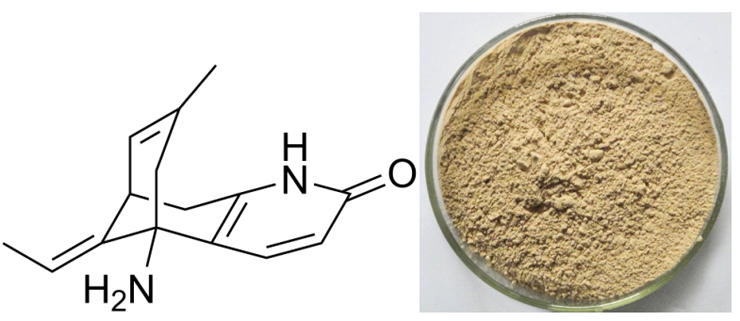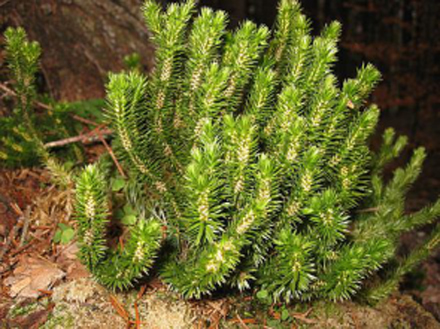Competitive Price for Huperzine A Belgium
Competitive Price for Huperzine A Belgium Detail:
[Latin Name]Huperzia serratum
[Source] Huperziceae whole herb from China
[Appearance]Brown to white
[Ingredient]Huperzine A
[Specification]Huperzine A 1% – 5%, HPLC
[Solubility] Soluble in chloroform, methanol, ethanol, slightly soluble in water
[Particle size] 80 Mesh
[Loss on drying] ≤5.0%
[Heavy Metal] ≤10PPM
[Pesticide residue] EC396-2005, USP 34, EP 8.0, FDA
[Storage] Store in cool & dry area, keep away from the direct light and heat.
[Shelf life] 24 Months
[Package] Packed in paper-drums and two plastic-bags inside.
[What is Huperzine A]
Huperzia is a type of moss that grows in China. It is related to club mosses (the Lycopodiaceae family) and is known to some botanists as Lycopodium serratum . The whole prepared moss was used traditionally. Modern herbal preparations use only the isolated alkaloid known as huperzine A. Huperzine A is an alkaloid found in huperzia that has been reported to prevent the breakdown of acetylcholine, an important substance needed by the nervous system to transmit information from cell to cell. Animal research has suggested that huperzine A’s ability to preserve acetylcholine may be greater than that of some prescription drugs. Loss of acetylcholine function is a primary feature of several disorders of brain function, including Alzheimer’s disease . Huperzine A may also have a protective effect on brain tissue, further increasing its theoretical potential for helping reduce symptoms of some brain disorders.
[Function] Used in alternative medicine, huperzine A has been found to act as a cholinesterase inhibitor, a type of medicine used to prevent the breakdown of acetylcholine (a chemical essential to learning and memory).
Not only used as a treatment for Alzheimer’s disease, huperzine A is also said to enhance learning and memory and to protect against age-related cognitive decline.
In addition, huperzine A is sometimes used to boost energy, increase alertness, and aid in the treatment of myasthenia gravis (an autoimmune disorder that affects the muscles).
Product detail pictures:

Related Product Guide:
We can normally fulfill our respected consumers with our great excellent, great value and good provider due to we're much more specialist and extra hard-working and do it in cost-effective way for Competitive Price for Huperzine A Belgium , The product will supply to all over the world, such as: Slovenia, Gabon, Danish, We've customers from more than 20 countries and our reputation has been recognized by our esteemed customers. Never-ending improvement and striving for 0% deficiency are our two main quality policies. Ought to you want anything, don't hesitate to contact us.
https://davesmith.ludaxx.com
https://www.davegsmith.com/
https://bluelineproducts.com/
Why it Functions for over the counter appetite suppressant in this area El Paso
When it Functions for
F21 is an All Natural Sugar Blocker that assists restrict your blood sugar absorption. It consists of various substances found to have numerous wellness advantages, such as L-Arabinose, Coriolus Versicolor Polysacchride, Konjac-Mannan, Magnesium Stearate, Mint flavor: Menthol and Natural Colors. F21 not just does it help advertise weight management, (PSK) boosts your immune system feedback. In fact, for every gram of F21, you can obstruct up to 20 grams of sugar (sucrose). The formula not just assists advertise weight management, it rewards the digestion system by enabling the blocked sucrose to support helpful probiotic germs while the polysaccharide (PSK) boosts your immune system feedback.
DG Smith https://www.davegsmith.com/
over the counter appetite suppressant :
00:00:05 loose weight
00:00:11 controlling hunger
00:00:17 over the counter diet pills
00:00:23 controlling hunger
00:00:29 how to control sugar diabetes
528 Hz – The Love Frequency
According to Dr. Leonard Horowitz, 528 Hertz is a frequency that is central to the “musical mathematical matrix of creation.” More than any sound previously discovered, the “LOVE frequency” resonates at the heart of everything. It connects your heart, your spiritual essence, to the spiraling reality of heaven and earth.The Love frequency is the “Miracle” note of the original Solfeggio musical scale. Independently confirmed by researchers, these core creative frequencies were used by ancient priests and healers in advanced civilizations to manifest miracles and produce blessings.
Math scientist Victor Showell describes 528 as fundamental to the ancient Pi, Phi, and the Golden Mean evident throughout natural design. Vic Showell and John Stuart Reid (a pioneer in acoustic research and cymatic measurements) have proven that 528 is essential to the sacred geometry of circles and spirals consistent with DNA structuring and hydrosonic restructuring.
528 resolves to a 6, the icon for physical manifestation. That is, 5+2+8=15; and 1+5=6 (using Pythagorean math). The symbol “6” reflects the “spiraling down from heaven into the wholeness of earth.” In fact, the Love frequency can be fundamental to broadcasting all matter and energy into reality according to the laws of physics.
Definition of the Love Frequency
528 is known as the ‘Miracle’ tone which brings remarkable and extraordinary changes. Dr. Joseph Puleo analyzed the meaning of the tone using Latin dictionaries and hidden entries from Webster’s Dictionary. The “Mi” tone is characterized as:
1. an extraordinary occurrence that surpasses all known human powers or natural forces and is ascribed to a divine or supernatural cause, esp. to God.528 Hz | Miracle Tone
142857142857142857142857142857142857142857142857 ᧞ π 3.142857 . . . to infinity
᧞ 285714285714285714285714285714285714285714285714 π x 2 = 6.285714 . . . to infinity
571428571428571428571428571428571428571428571428 ᧞ π x 2 x 2 = 12.571428 . . . to infinity
142857142857142857142857142857142857142857142857 ᧞
᧞ 285714285714285714285714285714285714285714285714
571428571428571428571428571428571428571428571428 ᧞
142857142857142857142857142857142857142857142857 ᧞
᧞ 285714285714285714285714285714285714285714285714
571428571428571428571428571428571428571428571428 ᧞
142857142857142857142857142857142857142857142857 ᧞
᧞ 285714285714285714285714285714285714285714285714
571428571428571428571428571428571428571428571428 ᧞
753 – 861 – 942 – 714 – 825 – 936 – 726 – 834 – 915
429 – 537 – 618 – 471 – 582 – 693 – 483 – 591 – 672
186 – 294 – 375 – 147 – 258 – 369 – 159 – 267 – 348
798 – 879 – 987 —-7——8——9— 789 – 897 – 978
465 – 546 – 654 —-4——5——6— 456 – 564 – 645
132 – 213 – 321 —-1——2——3— 123 – 231 – 312
762 – 843 – 951 -|741 – 852 – 963|- 735 – 816 – 924
438 – 519 – 627 -|417 – 528 – 639|- 492 – 573 – 681
195 – 276 – 384 -|174 – 285 – 396|- 168 – 249 – 357
Nicola Tesla tells us, “If you only knew the magnificence of the 3, 6 and 9, then you would have a key to the universe.” When Dr. Leonard Horowitz’s additional 3 frequencies (174, 285, & 963) are added to the original six, “completing the perfect circle of sound,” the 3rd, 6th, and 9th frequencies become 396, 639, 936.
The product manager is a very hot and professional person, we have a pleasant conversation, and finally we reached a consensus agreement.






